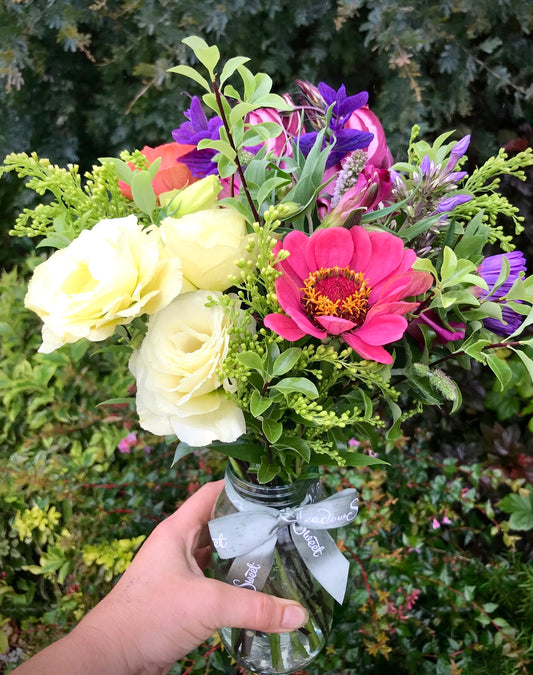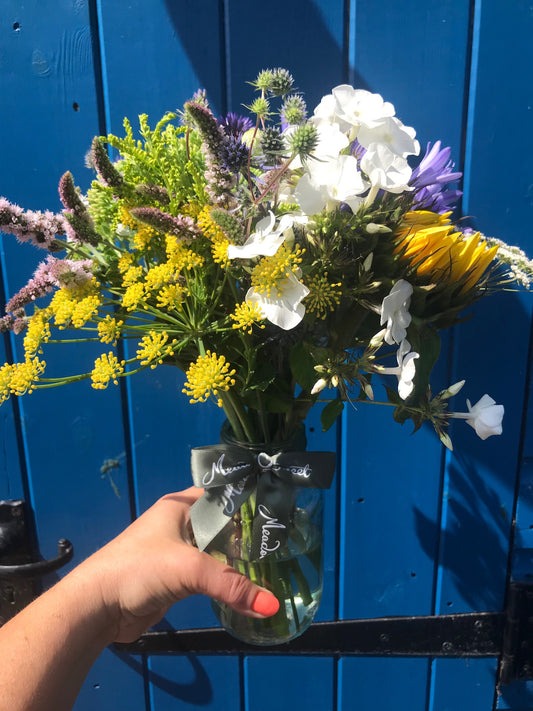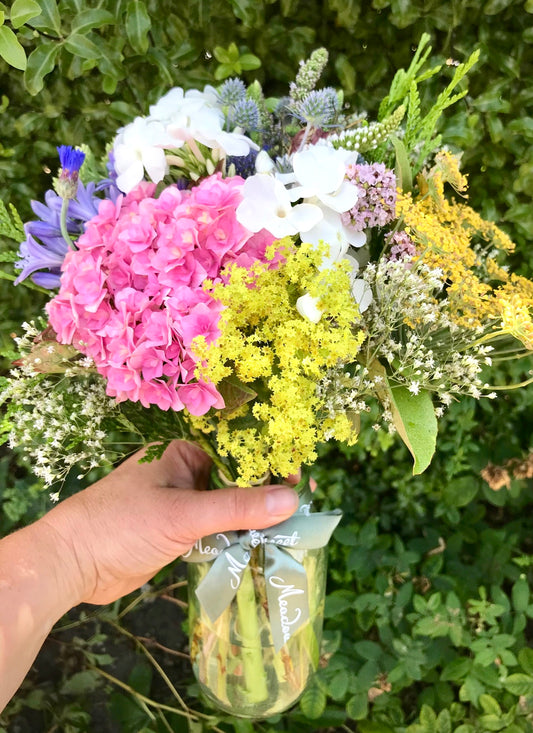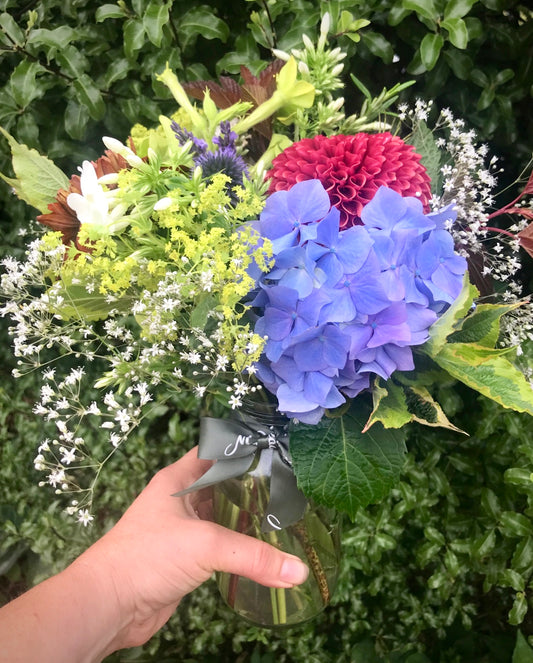News

Zany zinnias
You might say the weather has been somewhat disappointing for the start of the school holidays, but the flowers have been enjoying it and are all well-hydrated and growing well...
Zany zinnias
You might say the weather has been somewhat disappointing for the start of the school holidays, but the flowers have been enjoying it and are all well-hydrated and growing well...

Summer sunflowers
Hello sunflower! It's that time again. Sunflowers are showing up everywhere and if you're lucky enough to live near a field of them, even better! Such a joyful flower to...
Summer sunflowers
Hello sunflower! It's that time again. Sunflowers are showing up everywhere and if you're lucky enough to live near a field of them, even better! Such a joyful flower to...

Homegrown agapanthus
We're pleased to have our morning gathered agapanthus in this week's posies. This plant is native to Southern Africa but if you've spent time in New Zealand you might also recognise it...
Homegrown agapanthus
We're pleased to have our morning gathered agapanthus in this week's posies. This plant is native to Southern Africa but if you've spent time in New Zealand you might also recognise it...

Homegrown gypsophila
This posy includes the first of our homegrown gypsophila crop and this variety is called 'million stars'. It's a more delicate, dainty flower-shape than the more usual rounded 'baby's breath'. It...
Homegrown gypsophila
This posy includes the first of our homegrown gypsophila crop and this variety is called 'million stars'. It's a more delicate, dainty flower-shape than the more usual rounded 'baby's breath'. It...

Free seeds with every posy!
We're pretty chuffed with how everything is growing at our cutting garden at the moment. Despite the low rainfall, the amount of organic material that's been added to the soil has...
Free seeds with every posy!
We're pretty chuffed with how everything is growing at our cutting garden at the moment. Despite the low rainfall, the amount of organic material that's been added to the soil has...

British gypsophila is back in season!
Welcome back gypsophila, aka baby's breath! I didn't know it was part of the carnation family till just now - always learning! Often the choice for a country wedding, these...
British gypsophila is back in season!
Welcome back gypsophila, aka baby's breath! I didn't know it was part of the carnation family till just now - always learning! Often the choice for a country wedding, these...
